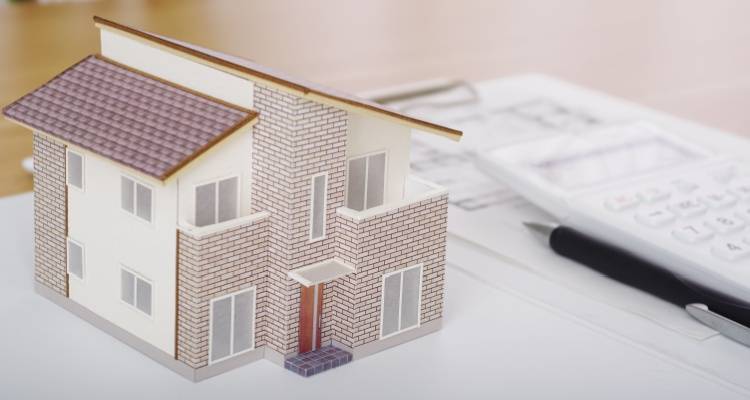Van Sizes
Choosing the right van size is tricky. With so many different types, it’s hard to know if a small van will cut it, or if you need a large van, or perhaps even a Luton van to take care of your transport needs.
Understanding payload capacity, load space, and gross vehicle weight can be overwhelming. This guide will help you choose the best van size for your intended use, whether that’s personal or business, giving you greater flexibility in transporting heavier loads.
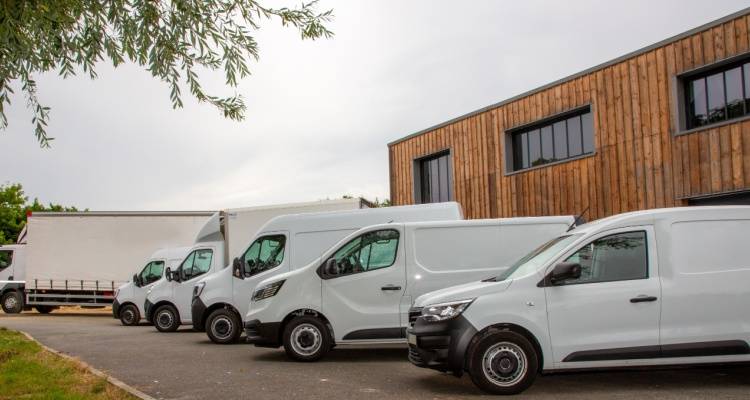
Whether you’re a trader wanting to ensure you buy a van suitable for your business operations or just need something for personal use to get from A to B with enough load space, this van size guide will help you achieve the best outcome.
Let’s get started!
Table of Contents
Van Sizes Comparison
Here’s a quick overview of van sizes:
| Van Size | Van Length | Van Width | Van Height | Payload | Suitable For |
|---|---|---|---|---|---|
| Small | 1.7 m / L1 | 1.5 m | 1.2 m /H1 | 500 – 900 kg | Local delivery drivers, moving small home appliances |
| Medium | 2.4 m / L1 | 1.7 m | 1.4 to 1.65 m / H1 | 900 – 1,200 kg | Local tradespeople carrying out minor jobs, moving one-bedroom worth of belongings |
| Large | 3.4 m / L2 or L3 | 1.7 m | 1.7 m / H2 | 1,200 – 1,500 kg | Commercial removal companies |
| Luton (3.5 tonnes) | 4 m / L4+ | 2.2 m | 2.2 m / H3+ | 1,000 – 1,200 kg | Commercial removal companies, transporting antiques/pianos |
| Crew | 1.5 m / L1 | 1.4 m | 1.2 m / H1 | 500 – 600 kg | Large passenger capacities |
| Dropside | 3.4 m / L2 or L3 | 2 m | 0.3 m / H1 | 1,253 – 1,500 kg | Open-air cargo unaffected by the elements |
Van Size Considerations
There’s a lot of jargon to understand when it comes to van sizes–so let’s make it more digestible:
- Van length can be referred to as L1 through to L4. “L” refers to the length of the wheelbase, with numbers ranging from 1 (short), 2 (medium), 3 (long), and 4 (extra long).
- Van height can be referred to as H1 through to H3. “H” refers to the height of the van’s roof, from 1 (standard height), 2 (high height), and 3 (extra high height).
- A van’s wheelbase is the measurement from the centre of the front axle (the component connecting and supporting the two front wheels) to the centre of the rear axle (the component connecting and supporting the two back wheels). These range from short wheelbase (SWB), medium wheelbase (MWB), long wheelbase (LWB), and extra long wheelbase (XLWB).
Let’s take a closer look at payload capacity, load space, accessibility, and any other factors you need to know before settling on the right van size.
Payload Capacity
Payload capacity is the maximum weight a van can safely carry in addition to its own weight. It is calculated by taking the van’s gross vehicle weight (GVW) and what is known as the “curb weight”, which is simply the van’s weight without any passengers or cargo, but with all the necessary fuel.
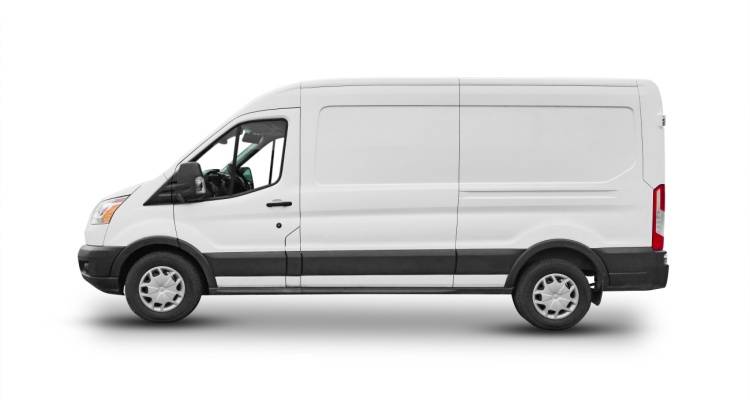
Before driving a van, it’s crucial to understand the importance of payload capacity. Exceeding the weight limits is not only unsafe for the van driver, passengers, and other road users — but it is also illegal.
You must not exceed your maximum payload. It’s important to choose a van size that suits your needs and is a good match for your intended cargo and its weight.
Load Space
A van’s load space is measured in litres or square metres, and is a measure of the interior of the van where cargo can be held. It’s important to note the difference between the load space and the van’s actual width dimensions, as the back of the van will be impacted by the rear wheel arches, which will cut around 40cm off the load width.
The volume is measured by multiplying the interior length (l), width (w), and height (h). For example, if a van’s interior measures 1.7 metres (l), 1.5 metres (w), and 1.2 (h), the load space would be just over 3m³ (cubic metres).
Load spaces of 2.3m³ to 3.3m³ are suitable for small moves, such as a student moving their home bedroom furniture to their student accommodation. In comparison, a medium van’s load space of 5m³ to 6.5m³ is better suited to those needing to move larger items of furniture like a two-seat sofa or bed mattress.
Larger load spaces — up to 11.3m³ — are best for those wanting to move the entire contents of a one-bed flat, with enough room for a small sofa, dining table, bed, and mattress.
Practicality
Some van sizes are harder to drive than others. Driving a small-sized van won’t be too dissimilar to driving a standard car, but large vans, and Luton vans in particular, will require extra skill and experience to drive safely due to their increased length.
Although dropside vans are practical to load and unload, their open-air cargo bed makes them only suitable for cargo that won’t be affected by the elements. Luton vans commonly feature hydraulic lifts at the rear of the vehicle, making them practical for house moves.
It’s worth bearing in mind that a van's length and width are bigger than those of an average car, which means the space needed to park will be different. You should also consider how your van opens — if it needs room to swing open the rear doors while parked, make sure you’ve left space.
Other Factors
Driving a van is a new experience for most drivers, and it’s important you know how to handle it in different situations. You must know the dimensions of your van and its load capacity — loading your van too much can be dangerous and illegal, and you don’t want to risk scraping the roof on a low bridge if you’re unsure about your height.
You’ll want to adjust your driving behaviour to ensure safety on the road, considering your van’s load and how that affects braking and stopping time. Volkswagen has a study that shows that a heavily loaded van driving at 30mph needs two extra metres to stop than an empty van does.
If you’re driving long distances, how comfortable the van is will be an important factor. You should spend time adjusting the seat to a comfortable position, ensuring you can see in all mirrors. Remember that there isn’t a rear-view mirror in vans, which can take some getting used to.
While it’s not recommended to leave tools or equipment in vehicles overnight, you’ll still want to ensure the security of your belongings while the vehicle is in use. From immobilisers to alarms, deadlocks and trackers, make sure you know how secure your van is before you load it up with expensive goods.
Types of Van Sizes
Let’s take a closer look at the different van sizes and their stats to help you find the best match for your needs:
Small Van (L1, H1)
Due to their compact size, small vans are good for transporting goods between towns and cities and are suitable for business and personal use.
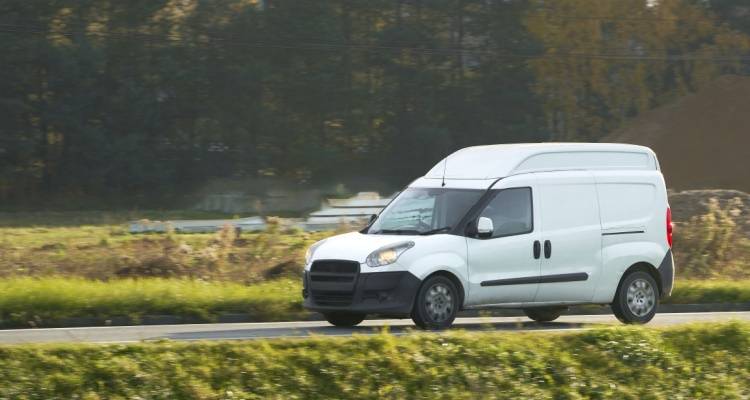
- Length: 1.7 m / 5’7”
- Width: 1.5 m / 4’11”
- Height: 1.2 m / 3’11”
- Payload: 500 – 900 kg
- Seats: 2
- Average Fuel Consumption: 40 – 60 MPG
- Load Space: 2.3 – 3.3m3
Their smaller size gives the best fuel economy out of the van ranges while being well-powered.
Local delivery drivers, florists, plumbers, and electricians would benefit from using a small van — especially if you want something slightly larger than a regular car but don’t quite need the load capacity bigger vans offer.
When it comes to personal use, small vans are perfect for collecting or delivering appliances that are too big for cars, such as dishwashers, washing machines, and fridges.
Some of the most common small vans on the market are the Peugeot Partner, which has a payload of up to 1,000 kg, and the Volkswagen Caddy, with a slightly smaller payload of 855 kg. Another popular choice is the Renault Kangoo, with a 975 kg maximum payload and 54 MPG.
Costs for new small vans start from £25,000, and used from £15,000.
Medium Van (L1, H1)
A medium van is a step up from small vans and is a great choice for those wanting a bit more space but don’t necessarily need the full capacity of a large van. They’re popular choices due to their flexible nature: they're big enough to carry a substantial load but not too big that they’re cumbersome to manoeuvre.
- Length: 2.4 m / 7’10”
- Width: 1.7 m / 5’7”
- Height: 1.4 – 1.65 m / 4’7” – 5’5”
- Payload: 900 – 1,200 kg
- Seats: 3
- Average Fuel Consumption: 30 – 40 MPG
- Load Space: 5 – 6.5 m3
Medium-sized vans are great choices for most trades, from plumbers and electricians carrying out bigger jobs than minor repairs to window cleaners, landscapers, painters and decorators. As they have both side- and rear-loading capabilities, they’re great choices for traders who need to load and unload larger items.
For personal use, medium-sized vans are suitable for moving 2-seat sofas from A to B and can handle the contents of a single bedroom, making them popular choices for university students moving from home to student accommodation.
Common medium-sized vans are the Vauxhall Vivaro, which has the same chassis as the Peugeot Expert and Citroen Dispatch, with a maximum payload of 1,400 kg and 60 MPG. Another popular choice is the Renault Trafic, with a maximum payload of 1,166 kg and fuel consumption of between 43 and 48 MPG.
Costs for new medium vans start from around £25,000, and from £17,000 used.
Large Van (L2/L3, H2)
Large vans come into their own when small and medium-sized vans just don’t cut it. Perfect for traders with large, heavy loads, a large van is the final step before you need to upgrade to a lorry for extra space.

- Length: 3.4 m / 11’1”
- Width: 1.7 m / 5’7”
- Height: 1.7 m / 5’7”
- Payload: 1,200 – 1,500 kg
- Seats: 3
- Average Fuel Consumption: 28 – 35 MPG
- Load Space: Up to 11.3m3
Popular with long-haul couriers and commercial removal companies, large vans offer ample space thanks to their long wheelbases compared to small and medium-sized vans. However, large vans require more experience to drive safely, as their extra length can be tricky to get used to.
The Ford Transit is a popular large van choice and has been a main player in the industry for over 50 years. For a larger vehicle, it still has an impressive fuel consumption of 32 – 41 MPG, and a maximum payload of 2,100 kg. The Mercedes-Benz Sprinter is another popular option, with a higher maximum payload of 3,100 kg.
Costs for new large vans start from around £30,000, and from £17,000 used.
Luton Van (L4+/H3+)
Luton vans, also known as Luton box vans, are most commonly seen with “man and a van” services, such as removal companies. They come in two sizes: 3.5 tonnes and 7.5 tonnes.
3.5 tonnes
- Length: 4 m / 13’1”
- Width: 2.2 m / 7’2”
- Height: 2.2 m / 7’2”
- Payload: 1,000 – 1,200 kg
- Seats: 2 to 3
- Average Fuel Consumption: 25 – 30 MPG
- Load Space: 10 – 20m3
7.5 tonnes
- Length: 6.1 m / 20’
- Width: 2.3 m / 7’6”
- Height: 2.4 m / 7’10”
- Payload: 2,500 kg
- Seats: 3 to 6
- Average Fuel Consumption: 15 – 25 MPG
- Load Space: 20 – 30m3
Luton vans have substantial space and hydraulic lift access, making them great for house removals and transporting pianos and antiques. Because of their bigger size, they are harder to manoeuvre than small and medium-sized vans.
Popular Luton vans are the Vauxhall Vivaro Luton, with between 25 – 30 MPG and up to a 2-litre engine. The Renault Master is another common choice, with a maximum payload of 1,500 – 2,500 kg and between 25 – 30 MPG.
Costs for new Luton vans start from around £25,000 (3.5 tonnes) and £30,000 (7.5 tonnes), and from £10,000 used (3.5 tonnes) and £15,000 (7.5 tonnes).
Crew Van (L1/H1)
Crew vans are great choices for transporting equipment and people, with removable seats for dual purposes.
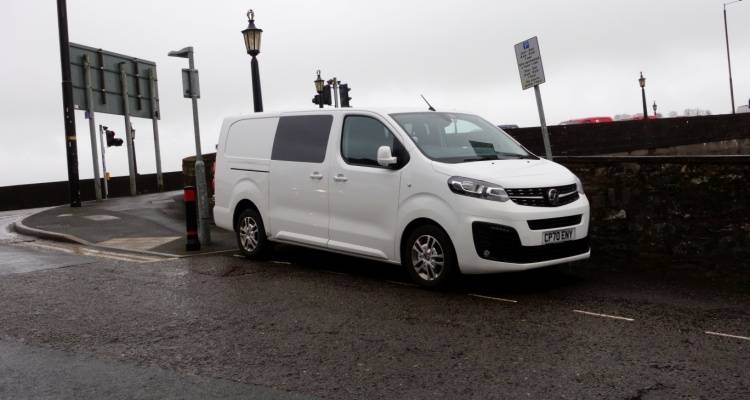
- Length: 1.5 m / 4’11”
- Width: 1.4 m / 4’7”
- Height: 1.2 m / 3’11”
- Payload: 500 – 600 kg
- Seats: 4 – 6
- Average Fuel Consumption: 50 – 60 MPG
If you’re looking for a van that combines business use as a van and personal use as a family vehicle to cater for a number of passengers, crew vans are a perfect solution. For purely business use, crew vans are most useful for those in construction.
A popular crew van is the Mercedes-Benz Sprinter crew van, with a maximum payload of between 1,200 – 2,500 kg depending on the exact model and configuration, with a GVW of either 3.5 or 5.5 tonnes, achieving between 25 – 35 MPG.
Costs for new crew vans start from around £35,000, and from £15,000 used.
Dropside Van (L2/L3, H1)
Dropside vans are suitable for cargo that won’t be damaged by the elements. They have an open-air flatbed cargo area, with sides that can be lowered or removed entirely to help with loading and unloading.
- Length: 3.4 m / 11’1”
- Width: 2 m / 6’6”
- Height: Variable based on cargo
- Payload: 1,253 – 1,500 kg
- Seats: 2 – 3
- Average Fuel Consumption: 20 – 30 MPG
Due to their open-air nature, dropside vans are suitable for trades such as construction, landscaping, and general hauling. It’s important that the cargo is weather-resistant, such as soil, plants, and building materials–it’s not an ideal choice for transporting antiques.
They are practical for “messy” trades and versatile enough to carry a wide range of materials. The adjustable sides make loading and unloading far easier than with some other van types. Popular dropside vans are the Ford Transit Dropside and Mercedes-Benz Sprinter Dropside, both of which are known for their versatility, reliability, and good performance.
Costs for new dropside vans start from around £25,000, and from £10,000 used.
Summary
If a standard car boot isn’t cutting it, it may be time to upgrade to a van to handle larger cargo. Whether you want something for business use as a courier, electrician, or plumber or just something big enough to take all the family in, finding a van can be the best solution.
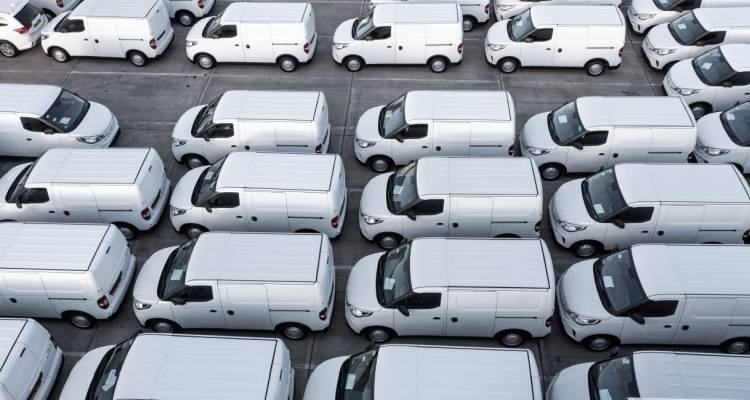
Here’s what you need to know when making your choice:
- Driving a van is a different experience from driving a standard car, with no rear-view mirror, different lengths, widths, and heights, as well as different braking/stopping times.
- You must know your van’s payload capacity and dimensions before driving to ensure safety for yourself, your passengers, and other road users.
- Ensure you don’t exceed your maximum payload, as this can cause accidents and is illegal.
- Always find a van size that suits your needs, considering if you need your cargo easily accessible or covered, and if there are any height restrictions on your route that may influence your choice.
If you’re in any doubt, speak to a van professional to get individual advice on your circumstances.
FAQs
What Size Van Can I Drive on a Normal Licence in the UK?
Drivers who passed their test before 1997 may also have a C1 classification, which permits the holder to drive vans with a GVW of up to 7.5 tonnes (7,500 kg).
What Is the Best Van Size for an Electrician?
That being said, a medium-sized van with a payload between 900 – 1,200 kg would be the best-fit all-rounder for an electrician, offering ample space for equipment and ease of access via side and back doors.
What Category Is a 3.5 Tonne Van?
How Old Do You Have to Be to Drive a Van?
How Much Weight Can a Van Carry?
If you’re in any doubt, speak to the person you’re hiring or buying the van from for their advice.
Sources
https://www.whatcar.com/advice/buying/what-type-of-licence-do-you-need-to-drive-a-van/n20237
https://sdvh.co.uk/what-is-a-3-5-tonne-van/
https://www.rac.co.uk/business/news-advice/advice-guides/7-tips-for-driving-a-van




